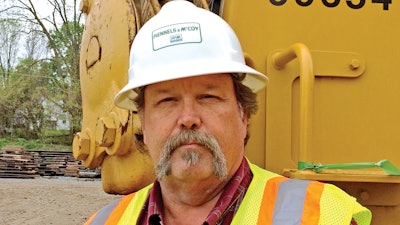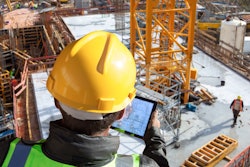
As fleet management professionals, we must know and understand the most current terminology and buzzwords. The “Internet of Things” (IoT) is one of those terms, defined by Technopedia.com this way:
“The Internet of Things (IoT) is a computing concept that describes a future where everyday physical objects will be connected to the Internet and be able to identify themselves to other devices. The term is closely identified with RFID as the method of communication, although it also may include other sensor technologies, wireless technologies, or QR codes.
“The IoT is significant because an object that can represent itself digitally becomes something greater than the object by itself. No longer does the object relate just to you, but is now connected to surrounding objects and database data. When many objects act in unison, they are known as having ‘ambient intelligence.’”
Most of today’s fleets and equipment organizations have a plethora of this technology currently in place. Equipment manufacturers have been working on and developing this technology for years. Kevin Ashton coined the term “Internet of Things” in 1999 while working with connectivity of physical devices, according to an article by Arik Gabbai, “Kevin Ashton describes ‘the Internet of Things,’” on Smithsonian.com. These physical devices, sensors, electronics, actuators and software collect embedded data and exchange that data via network connectivity.
Another term that is often used today is “lean construction.” Lean construction is a process or principle of designing production systems to minimize the waste of materials, time and effort in order to generate the maximum possible margins or amount of value. IoT is the best method to accomplish that.
Examples of how IoT is improving fleet management
Let me give you a few examples of how Henkels & McCoy has embraced IoT and realized safer operations, highly improved maintenance key performance indicators (KPIs), better improved cost controls and increased profit margins.
At H&M, we have developed and put into place a QR code system. Each piece of equipment has QR codes printed on long-lasting decal media and strategically placed at different areas on each machine. These codes can be scanned with any smart device to provide instant access to specific information related to that machine: lifting capacities, daily walk around safety videos, periodic inspection points and checklists, OEM proper operational videos. If an operator, mechanic or anyone else has a question about any particular aspect of the machine’s operation, the information is now at their fingertips anytime, anywhere.
With many different types of machine makes and models scattered across the nation, it was difficult to get preventive maintenance (PM) schedules out to the field and completed repair orders back to the fleet department in a timely manner. Purchasing parts was also a problem. Major projects would purchase a large stock of filters and maintenance parts. At the end of the project, the balance of these stocked overage parts would be sent back, incurring a restocking fee, or they would be sent back to the maintenance facility, causing a great deal of wasted time and freight costs.
Working with our OEMs and their parts support groups, we developed an “on-demand PM parts program.” Using the maintenance module of our telematics solution, we now have the ability to send our parts provider a “maintenance due alert.” This alert informs our parts provider that a PM is due on a specific machine, the level of the PM, and what filters and parts will be needed to perform the required maintenance.
This alert is generated automatically 40 hours prior to the actual PM trigger. At that point, our parts support team builds the maintenance kit, inserts the OEM checklist, and ships the parts kit to the machine’s location via the project’s geofence name and address. This alert also informs the master technician on the project that there is a machine needing the PM and that the parts have been shipped.
Once the PM is completed, the onsite technician snaps a picture of the completed PM checklist, sends that picture via email or text to the PM coordinator at the main maintenance facility, and the PM is recorded immediately. Very soon, via a smartphone or tablet app, the onsite technician will be able to submit the PM repair order directly into our maintenance database. This process has taken our PM completed percentage from 60 percent to more than 95 percent.
As with any good business, better control results in improved profit margins. Next to labor, equipment and its fuel are the most expensive parts of any project. Equipment utilization drives these costs and ultimately can give you the very data needed to make critical decisions such as the right-sizing of your fleet, fleet composition, and determining when to rent rather than own.
In the past, these decisions were made by manual entries or timesheets, and were often based upon unquantifiable opinions rather than fact-based data. Over the past four years, by utilizing telematics, H&M has used automated utilization data to increase overall fleet usage from an average of 51 percent to 75 percent and climbing. In addition, we have reduced our owned equipment count from 1,200 machines to 700 machines, thus reducing fixed costs and increasing equipment reliability.
Our fleet composition has also changed from heavily owned basic type of machines—excavators and dozers—to more industry-specific owned types of machines, such as pipe layers and winched dozers. This has enabled us to reduce our overall mobilization and demobilization costs by increasing local rentals and flexible OEM short-term leasing programs. As a result, we realized a 33 percent reduction in our fixed equipment costs from four years ago. This equated to an increased profit margin for the company as an enterprise.
Equipment idling equals wasted fuel, and fuel isn’t cheap. With telematic sensors on all our machines, we now have the capabilities to show each project’s detailed idle times by each machine, total idle times, and how much it is costing each project for wasted fuel. Our project managers now monitor and control excessive idling, again netting higher profit margins.
The Internet of Things and lean construction go together like peas and carrots. For those of you that have not jumped on this high-speed train called technology, you will be seeing nothing but taillights as the world passes right by you.



















